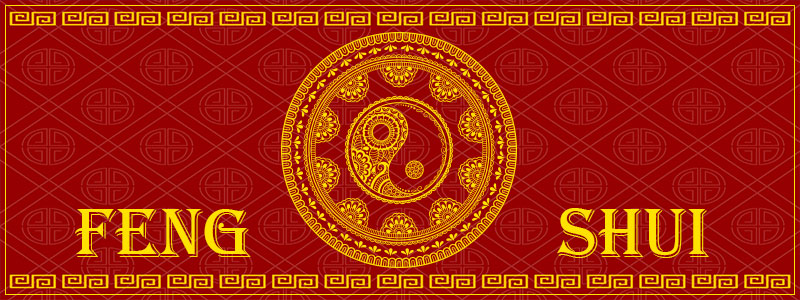What is Fengshui?

Fengshui
What is Fengshui? (The Chinese Concept Of Vastu):- Literally, Feng-shui means “Flow Of Energy through Wind & Water” (In Indian terms – Hava-Paani). This ancient Chinese practice of positioning and placement promotes living where the “wind is soft, water is calm & the life is balanced”.
Origin of Feng-shui: Feng Shui, the ancient “art of placement” (like Indian Vasthu-shastra) originated in the breath positive beautiful mountainous regions & hills of the Middle Kingdom of China from where it spread in Japan, the United Kingdom, India, Malaysia, Indonesia, Burma & Taiwan and in other parts of the world through informal & traditional mediums and well-defined guidelines through formal literature. Ancient Chinese people believed that the earth was full of supernatural powers like spirits. Everything in the world is there in it: human beings, cattle, animals, birds, plants, rocks and minerals, water, thunder, lightning, and the mighty weather systems all carry wonderful cosmic power and energies. They have the capacity and capability to generate different positive & negative vibrations. Feng Shui, the mystic science or the ancient Chinese art of achieving harmony through careful placement of objects, is finding followers in the whole of the World.
Logical explanation: According to the belief of feng-shui, it defines that everything in this world has one or the other kind of energies. Modern science too agrees with this concept up to enough extent. That is why this science came into existence and got a good hold amongst all the occult sciences working on the principles of subtle energies.
Pure modern science proved that every living, nonliving, or all other types of objects & articles including clay, sand, stone, plant, birds, animals, etc. are formed with the different molecules, elements and compounds taught in chemistry. Therefore, everything has a configuration of an atom that contains protons and neutrons in the central space called the nucleus and they have electrons moving in the preset orbits and sub-orbits around the nucleus. Thus, as per the above philosophy, each thing in a house keeps on receiving & emitting vibrations. That’s the basis of talking of energies in Feng-Sui.
Origin and background: This art of living and positioning and placement of various objects in an abode was originated in the lap of mountains of Everest towards the Tibetan part & other Southern geographical regions of China. In all the Fengshui masterships, Feng shui is normally & typically associated with the following methods to calculate the Yang & Yin impacts.
This is not a complete list; it is merely a list of the most common techniques being used by the feng shui masters & Fengshui practitioners:
Common practices & methods:
- Bagua or Bagua (pakua) method (the most common method, based on the relationship of the five
phases or wu xing) - Flying Stars methods of time and directions (Xuan Kong Fei Xing)
- Five phases (wu xing relationships)
- Time and space methods (Xuan Kong)
- Secret Decree” or 64 gua relationships (Xuan Kong Da Gua)
- Time and space water methods (Xuan Kong Shui Fa)
- Purple-White Flying Stars methods (Zi Bai)
- Eight Mansions (Ba Zhai)
- Gate Eight Formation (San Yuan Dragon)
- Major & Minor Wandering Stars
- 24 Mountains, Mountain-Water relationships (San He Luan Dou)
- Water methods (San He Shui Fa)
- Eight Doors and Nine Stars methods (Qimen Dunjia)
- Purple King, 24-star Astrology (Zi Wei Dou shu)
- Mixed method (normally used today in one or the other form)
- Fengshui cures- objects method (Commercial method)
Feng-shui & Astronomy:
Early feng shui also relied on the universal system of astronomy to find correlations between human beings and the universal energies and it is inseparable from an understanding of political power in premodern China. In ancient times Chinese often used the celestial poles determined by the pole stars to determine the north-south direction axis of settlements.
This technique explains why Shang palaces at Xiaotun lie 10° east direction of due north. Similarly, in some cases, as Paul Wheatley observed, they bisected the angle between the directions of the rising and setting sun to find the north direction. This technique provided the more precise alignments of the Shang walls at Yanshi.
Early Yanshao and Hongshan cultures provide the earliest evidence for feng shui. In those times, the Feng Shui practitioner Professor David Pankenier and his associates reviewed astronomical data for the time of the Banpo dwellings (4000 BCE) to show that the asterism Yingshi (Layout the Hall, in the Warring States period and early Han era) corresponded to the sun’s location at this time. Centuries before, the asterism Yingshi was known as Ding. It was used to indicate the appropriate time to build a capital city, according to the Shijing. Apparently, an astronomical alignment ensured that Banpo village homes were sited for solar gain to have long term benefits to the whole of mankind.
The positive vibrations and their benefits from the direction of the east are valued globally. Even in India too, our ancestors used to give first preference to the direction of early sunrise, i.e. east.
Logically what is Feng Shui?
What is Feng Shui it is a very simple question but the answer is very complicated because feng shui is a science that speaks about the intelligent positioning and placement of various objects inside the house and outside the premises. It is a vast subject that talks about the Kua number, about money, interior and exterior related artefacts and show pieces. It speaks about the furniture inside the room and offices etc. Therefore most of the people know it very well that Fengshui about mirror is going to reflect the things and fix it on the other side virtually.
What does Feng Shui Mean?
When we talk about fengshui and we tend to know what does Feng Shui mean then it is a but natural fact that we try to analyse Feng Shui with the science of energies and vibrations. What does Feng Shui mean is defining setting of architects and interiors and it defines how the human being should live in tune to the vibrations made by the nature. What is my Kua number or how to calculate male and female kua number is the common question which is being asked by everybody who is going to believe in Feng Shui. Now let us see what is Kua number and how the given number is going to affect the human being. Certainly this is very closely associated with the date of birth and the date of birth is calculated with the help of Lunar calendar of China.
What is Feng Shui and what is its purpose?
Feng Shui; what is it? Feng Shui has very close relation with good luck of the inmates who are residing in the house or working in the office. What plants bring good luck as per Feng Shui is also a very vast subject and a lot of researches have been done on this good subject because human being likes the green tree, plants and trees and as per Feng Shui it is obvious that if all the plants are going to arrange as per the vibration science they may bring good luck. Similarly what colours front door is lucky is a very common question on the emails received by Dr. Anand Bhardwaj every day and he defines that the colour of the main gate should be done as per the directions and kua number of the head of the family.
All about Fengshui:
All about Feng Shui is defining everything with the help of positive energy and vibrations. But is Feng Shui design the most auspicious and fortunate; is a critical question but if somebody tries to learn how to set the vibrations and energies inside the house as per our desire, the setting becomes very easy as per Feng Shui, Feng Shui bedroom and Feng Shui Bagua or Pakua are interconnected when it comes the science that gives the comfort and happiness to the newlywed couple. Feng Shui home or Feng Shui plants are as important as Feng Shui colours. Nowadays Feng Shui has got very much popularity all over the world especially in China, in Japan, in Taiwan and other parts of the Western world.
Benefits of Feng Shui:
Those who believe in Feng Shui and those who have tried once in a life Feng Shui and its value they he can we understand that it is a very strong science within its no cost but an intellectual arrangement of internal items and artefacts. FengShui also speaks about the paintings and posters, family photograph, children photograph, luk-fuk-sau, love birds and Mandarin ducks. People also want to know what is the best form of laughing Buddha which is becoming very popular among the Feng Shui lovers. In fact every item defined in Feng Shui is related to one or the other aspect of the life and it has a very e soothing effect on the mood, creativity and carrier of the inmates.
